|
This blog entry is largely based on a H.E.S.S. "Source of the Month" article mainly written by Jean Damascene Mbarubucyeye (Desy-Zeuthen) and that will be published on the H.E.S.S. website soon. An extremely energetic flash emitted with a stellar explosion that happend 3 billions years ago in a distant galaxy hit Earth in October 2022 and was recorded as the brightest gamma-ray burst that has ever been detected. It has rapidly be dubbed "The BOAT" (for "Brightest Of All Times") in the GRB community. The flux of gamma rays was overwhelming most detectors and caused changes in the electromagnetic properties of Earths atmosphere. The following figure shows the number of X-ray photons (in millions of counts/second!) detected by the GBM instrument onboard the Fermi satellite for a selected number of GRBs. Many results have been published in a special issue in ApJLetter. See this link for an overview. This chart compares the BOAT's prompt emission to that of five previous record-holding long gamma-ray bursts. The BOAT was so bright it effectively blinded most gamma-ray instruments in space, but scientists were able to reconstruct its true brightness from Fermi data. Credits: NASA's Goddard Space Flight Center and Adam Goldstein (USRA) Gamma-ray bursts (GRBs) are observed as bright X-ray and gamma-ray flashes from distant sources outside of our Galaxy. They come from the deaths of rapidly rotating massive stars and the mergers of compact objects such as neutron stars. For the first kind of GRB, the core of the star collapses and a fraction of the released gravitational energy is fed into a violent blast wave ploughing through the remnants of the star at nearly the speed of light. The resulting electromagnetic emission can be roughly divided into two phases: the prompt phase, the initial bright flashes that typically last up to a few tens of seconds, and the slowly fading afterglow phase that can be detectable over a large part of the electromagnetic spectrum for days or months. During the afterglow, the blast wave produces relativistic shocks that propagate into the surrounding material and accelerate charged particles such as electrons. These accelerated electrons then interact with the magnetic field in the material, emitting X-ray radiation in the form of synchrotron radiation. The physics of GRB afterglows is a prime opportunity for the study of relativistic shocks. The synchrotron emission process, which produces the X-ray emission, has been studied extensively and is well understood; however, the details of emission at higher energies, such as the very-high energy (VHE) gamma-ray (> 100 GeV) domain, is still under debate. In the last few years, a number of GRBs have been detected in VHE gamma rays. This VHE component is usually associated with the inverse Compton scattering of either ambient or synchrotron photons, the latter being known as the synchrotron self-Compton (SSC) scenario. However, a mismatch between observations and the usually employed single-zone (i.e., uniform magnetic field) SSC description was noted in GRB 190829A (see [2] and the June 2021 SOM). Further observations, especially in the VHE gamma-ray domain, are therefore necessary to shed light onto this open question. X-ray lightcurve of the afterglow of the BOAT in comparison to previous GRBs (highlighting bursts detected at VHE energies). From Astro-COLIBRI. On October 9th 2022, the Fermi Gamma-ray Burst Monitor and later the Neil Gehrels Swift Burst Alert Telescope detected and localized GRB 221009A. H.E.S.S. was not able to observe the burst immediately as, due to the full moon at the time, the night sky background was too high for the operation of our highly sensitive instruments. However, observations become possible two days later, on October 11, and continued over more than a week after the burst was first detected. Unfortunately, the campaign was heavily influenced by rather poor atmospheric conditions including cloudy skies and a high aerosol content. Careful analyses of the data acquired by H.E.S.S did not yield any significant detection of VHE gamma rays at the GRB position in the total dataset nor for individual nights. Nevertheless, we were able to derive stringent upper limits on the VHE gamma-ray flux. These can be put into the context of the X-ray afterglow (cf. left figure below) and are useful to constrain the various possible theoretical emission scenarios. An example for this is given in the right figure below.
GRB 221009A had many exceptional features in addition to its exceptional brightness. In particular, the long lived X-ray afterglow spectrum remained consistently hard for several nights; i.e., in the X-ray regime, a larger fraction of the total energy was emitted in higher-energy photons compared to lower-energy photons than is often seen for GRBs at these times. A possibility is that the electrons are continuously accelerated with a remarkably hard spectrum. Why this should be the case is a mystery. A firm detection by H.E.S.S. in such cases would greatly advance our understanding of these rare events, but the upper limits equally play an important role in disentangling the various theoretical models. Another important question that remains to be answered is why some afterglows are gamma-ray bright with comparable X-ray and gamma-ray fluxes (e.g. GRB 190829A), while for others, like GRB 221009A, the VHE emissions seems evidently much weaker. VHE gamma-ray astronomy has a major role to play in this story. References
[1] F. Aharonian et al. (H.E.S.S. Collaboration), H.E.S.S. follow-up observations of GRB 221009A, ApJLetters 946, L27 (2023) [2] Abdalla et al. (H.E.S.S. Collaboration). 2021, Revealing x-ray and gamma ray temporal and spectral similarities in the GRB 190829A afterglow, Science, 372, 1081
0 Comments
This post is largely based on the "Source of the Month" article that was prepared by Halim Ashkar and the H.E.S.S. GW follow-up task force and which was published on the website of the H.E.S.S. Collaboration in January 2022. Gravitational Waves (GWs) are produced by the coalescence of compact objects like neutron stars and black holes. These events are in no doubt in the list of the most cataclysmic events in the Universe. GW events are also promising candidates for producing very high energy (VHE) emission through particle acceleration processes. This is why H.E.S.S. dedicates a large amount of observation time to the follow-up of GWs. In a recent publication (available here and via the arXiv), we describe the methods and procedures put in place to conduct these challenging observations in an optimal way. The developed algorithms have been put to the real-life test over the last years during several observation runs of the GW interferometers Ligo and VIRGO. Artists impression of a binary black hole system producing gravitational waves. (Image credit: LIGO/Caltech/MIT/Sonoma State, Aurore Simonnet) Thanks to these detailed preparations, H.E.S.S. was the first ground-based instrument to observe the event GW170817 [1-3] on 2017 August 17, the neutron star merger that was accompanied by a gamma-ray burst. These observations resulted in the first stringent upper limits on the VHE emission from a neutron star merger. Details about this amazing event and our observations can be found in previous blog post: the-birth-of-multi-messenger-astrophysics.html Since 2017, H.E.S.S has also observed four merger events of two black holes. Black hole mergers are not typically expected to produce gamma-ray emission because, due to long merger times, most of the surrounding matter has been accreted before the merger happens. However, a weak gamma-ray transient detected by the gamma-ray telescope Fermi-GBM [4] less than half a second after a merger of two black holes triggered much interest in the astrophysical community and encouraged the search for VHE emission from such events. Moreover, GW signals from black hole mergers are detected much more often than from neutron star mergers and are therefore a good way to test H.E.S.S.'s response to GW events. The four observations reported in another paper published in 2021 have allowed us to commission the H.E.S.S. GW follow-up program and to improve it for future observations. The paper itself is available here and via the arXiv. The localization regions of GW sources can span several tens to hundred of square degrees in the sky, while the H.E.S.S. field of view is around 20 square degrees. Therefore, follow-up observations of GW alerts are challenging and require special strategies to be implemented. These strategies are detailed in [5]. In a nutshell, the goal of these observation strategies is to identify the regions that are most likely to have hosted the event of the GW event, taking into consideration the visibility and observational constraints of the H.E.S.S. telescopes. H.E.S.S. coverage of the GW190728_064510 event. The project of the GW event localization on Earth is shown on the left at the time of start of the observation. The yellow and brown patches indicate the regions where light from the Sun and Moon, respectively, was too bright to allow for H.E.S.S. observations. The red square indicates the location of the H.E.S.S. telescopes and the red line indicates the region of the sky that was visible to H.E.S.S. The sky map with the probability of the position of the event together with the fields-of-view of individual H.E.S.S. observations (black circles) is shown on the right.The green dotted circle is a neutrino candidate detection by IceCube [10]. Only alerts of GW events whose localization regions do not exceed a few hundred degrees in the sky are picked for observation by our algorithms; otherwise, the region would be too large to cover in a manageable time. H.E.S.S. was able to schedule observations on several GW events. However, nature is not always on our side, and clouds and rain disturbed two of these observations. In total, and in addition to GW170817, four successful observations were performed on four different black hole mergers: GW170814 [6-7] in 2017 during the second GW observing period, GW190512_180714 and GW190728_064510 in 2019 during the first part of the third observation period [8] and GW200224_222234 in 2020 during the second part of the third observing period [9]. Electromagnetic counterparts of these events were never found by the astronomical community and thus they remain poorly localized. However, H.E.S.S. was able to cover large portions of their localization regions which increases the chance of having covered the true positions of the events. The start of the H.E.S.S. observations ranges from three hours after the detection of the event GW200224_222234 to two days for GW170814. No significant VHE signal was found but the good quality data obtained permit us to compute upper limits on the VHE gamma-ray emission in the sky regions covered by H.E.S.S. [11-12]. These upper limits constrain for the first time VHE emission from black hole mergers. In the future the interpretation of upper limits can be eased by having earlier and longer observations. Assuming that the H.E.S.S. observation strategy remains the same, and due to the expected high rate of GW detections with additional and/or more sensitive detectors in the future, H.E.S.S. will have on average the chance to observe several GW events with minimal delay. Moreover, the localization of GW events is expected to improve as more GW detectors join the network, which means that some of these events will be sufficiently well localized that they will be able to be observed with a single pointing. This will allow us to spend more time on one individual position and obtain longer, more sensitive observations, instead of spending time on covering large areas in the sky. In conclusion, this will result in stronger constraints on the VHE emission from black hole mergers. All this will hopefully become a reality during the next observation run of the Ligo/VIRGO/KAGRA interferometers that is scheduled to start end of 2022. References
The paper is out! Finally! After almost 2 years we can finally talk openly about the amazing observations we obtained with H.E.S.S. in our campaign in late autumn 2019. A bit of context: we have been trying to catch very-high-energy gamma-ray emission from a Gamma-Ray Burst (GRB) since the dawn of Imaging Air Cherenkov Telescopes, i.e. since over two decades. The GRB program of H.E.S.S. is the longest running observation program of the collaboration. Every year for almost 20 years, the observations and trigger conditions are discussed and updated and students sign up every month for 'expert-on-call' shifts that mean that they'll be woken up in the middle of the night to guide the on-site shift crew in GRB observations, These efforts came finally to fruition with the H.E.S.S. observations of GRB 180720B, the first detection of a GRB by an IACT ever. Rather surprisingly, these observations were made several hours after the burst in the period of fading X-ray emission called the afterglow. More in line with expectations, a few months later MAGIC detected a strikingly strong signal from GRB 190114C in the first minutes after the burst. Two bursts in ~20 years... Artist's impression of a relativistic jet of a gamma-ray burst (GRB), breaking out of a collapsing star, and emitting very-high-energy photons. Credit: DESY, Science Communication Lab In the evening of August 29, 2019 a GRB was detected by the Fermi and shortly later by the Swift X-ray satellites. Business as usual for the H.E.S.S. Transients group (that was still part of the larger Extragalactic Science group at that time): the automatic VoSystem calculated the best time window for H.E.S.S. observations which started roughly 4h30 after the burst. To make things more complex multiple ToO programs (including a Galactic Nova outburst and an AGN flaring activity) requested observations for the same night. These conflicts could be settled and observations on the GRB were scheduled. Sidenote: the observations were almost cancelled because the shift crew confused a retraction of a GW event by Virgo/LIGO with a retraction of the GRB. Luckily our expert-on-call (Quentin, a PhD student from LAPP/Annecy) reacted quickly and clarified the situation. So far so good. Although the next day was Saturday I got up early to drive my son and some friends to a basketball camp. This plan fell apart as soon as I checked the shift report from the last night. A signal in the real-time analysis during the observations of the GRB had caused the shift crew and the expert-on-call to extend the observations beyond the originally scheduled window! A frantic checking of the data quality and analysis results followed. Luckily a family friend jumped in to take care of the basketball players in the meantime ;-) I quickly drafted a text for a GCN circular and Astronomers Telegram to allow for our friends operating telescopes in South America to react while it was still dark enough for observations. Maybe I should have stopped for a while and got some coffee: it might have prevented me messing up the dates mention in the GCN/ATEL: the observations took well place in August and not July 🤦♂️. The rest is history... We continued to observe the region of the burst for several days 'just in case', set up an analysis team, rapidly retrieved the data from Namibia (using our lessons learned from GW170817), went through a long list of data quality checks before unblinding the high level analyses. I signed up to conduct one of the two independent analyses, the other one (which would in the end be used for the plots in the paper) was led by Edna (PhD student at MPIK, Heidelberg). Towards the end of the year we had a first meeting in Desy-Zeuthen to compare the results of the two analyses. In preparation of the meeting (i.e. the night before in my hotel room in Berlin) I ran the analysis for the first time on an extended dataset beyond the first two nights of observations. To my surprise I found a signal even in the third night of data taking! In total we could follow the emission for over 56h! This really shattered (at least my own) earlier expectations and extrapolations from Fermi-LAT observations which rather pointed to timescales of minutes for the emission of high-energy photons from GRBs... The light-curve of GRB 190829A in X-rays and VHE gamma-rays (red points). For the first time we could follow the evolution of the emission over several days and show the similarity between the two energy domains. From Science, 2021 We then finalized the analyses and verified that both pipelines gave consistent results, which in the end took a few extra months due to some (in the end very minor) bugs/updates/changes/etc. in the software frameworks. But the fun was not over yet: the theoretical models based on inverse Compton emission that we just had "confirmed" with the papers on GRB 180720B and the MAGIC paper on GRB 190114C, did not fit the high resolution energy spectrum that we managed to derive due to the proximity of the burst. The "modelling group" led by Andrew from Desy-Zeuthen realized that we indeed may need to let go of one of the fundamental limits of synchrotron emission of high-energy electrons. This “burn-off limit” is determined by the balance of acceleration and cooling of the electrons within the accelerating region. Neglecting it allowed to describe the measured gamma-ray energy spectrum almost perfectly... Is this possible? Probably yes, but it would require a more complex configuration of different regions responsible for the acceleration and the synchrotron emission. Maybe also some completely different explanation is possible. Time and a lot of effort by the world-wide community will tell... The energy spectrum of GRB 190829A in the X-ray (gray butterflies) and VHE gamma-ray domains (red butterflies) are strikingly similar and cannot easily be explained by the usually used SSC description (blue bands). Removing the constrains on the maximum energy of the accelerated electrons allows to fit both domains as pure synchrotron radiation. From Science, 2021 In the meantime we are updating the H.E.S.S. observation program with the lessons learned from GRB 190829A to increase our changes for additional GRB observations and prepare the observations with the Cherenkov Telescope Array and especially with the first Large Size Telescope that is already taking data on La Palma. Exciting times! Stay tuned... The paper is available here: science.sciencemag.org/cgi/doi/10.1126/science.abe8560 and don't miss the phenomenal animation done by DESY, Science Communication Lab: A few other articles on the results:
This post is mainly based on the "Source of the Month" article that I wrote together with Gavin Rowell and which was published on the website of the H.E.S.S. Collaboration. Magnetars are very highly magnetised neutron stars with a surface magnetic field reaching 10^15 Gauss, about 1000x stronger than that derived for 'normal' neutron stars, and among the strongest magnetic fields found in the universe.. They power the so-called soft gamma repeaters (SGRs) and anomalous X-ray pulsars (AXPs), which are well-known for their irregular bursts in X-rays and soft-gamma-rays. During the short (faster than minutes) bursts, the brightness can increase by a factor of 1000 or more. There are only 29 SGRs and AXPs catalogued so far (1). Following its discovery in 2016, SGR J1935+2154 has become probably the most burst-active SGR, emitting dozens of X-ray bursts over the past few years (2) . SGR J1935+2154 has been associated with the middle-aged SNR G57.2+0.8 at a distance of about 6.6 kpc (3) as shown in Fig. 1. Fig.1 SNR G57.2+-0.8 in X-rays (cyan: XMM-Newton 0.4-7.2 keV) and radio (red: THOR VLA 1.4 GHz). The bright X-ray central source is SGRJ1935+2154 and the cross indicates a 1720 MHz OH maser tracing an SNR shock interaction with an adjacent molecular cloud. From Zhou et al. 2020 (3). Following two alerts on 27 April (2020 the first at UT 18:26) from Swift-BAT spaced apart by only 6 minutes, H.E.S.S. observed SGR J1935+2154 for 2hrs on the night of 27/28 April 2020 covering the UT 01:55 to 03:53 period of 28 April 2020. Later that night Swift reported a "forest of bursts from SGR J1935+2154" (4) which was observed just after the initial BAT trigger at UT 18:26. This forest of bursts lasted for about 7 hours and stopped about 1 hour prior to the H.E.S.S. observation window. A more complete list of Swift-BAT bursts is given in (5). Swift, and many other X-ray and soft-gamma-ray telescopes (Fermi-GBM, INTEGRAL, sAGILE, HXMT, Konus-Wind, NICER) have also reported intense activity over this and the following period into late May. Fig. 2 shows the burst history of SGR J1935+2154 compared to the H.E.S.S. observation window. Fig. 2. Left : Multi-year burst history of SGR J1935+2154. Right : Burst history of SGR J1935+2154 zoomed in around the H.E.S.S. 2hr observation window (orange dashed line and green shaded region). Included are the two radio bursts seen by CHIME + STARE2 and FAST discussed below. While this high energy photon activity from SGR J1935+2154 was certainly interesting in its own right, the situation became considerably more notable with the detection of short, intense radio bursts from the direction of SGR J1935+2154. To-date, two millisecond-duration radio bursts have been detected - the first burst by CHIME and STARE2 (6,7), and the second burst by FAST (8). When removing the dispersion delay, the timing of the first radio burst appears to line up very well with one of the bright X-ray bursts seen by INTEGRAL and the Insight-HXMT (9, 10). This overlap is now seen as the first convincing evidence that magnetars are linked to FRBs, or at least, to repeating FRBs. Fig. 3 below shows that CHIME measured two components within the first radio burst seen from SGR J1935+2154. The energy of the burst is about 10^34-10^35 ergs, just below the low end of the extragalactic FRBs distribution observed so far. This discrepancy is likely due to the sensitivity limits of current radio telescopes, thereby biasing towards detection of energetic extragalactic FRBs (6). Fig.3 Left : CHIME "Waterfall" plot of the first radio burst from SGR J1935+2154 showing the two-component structure. Right : Comparison of the radio burst fluence and energy vs. distance with bursts from a variety of other compact sources. Plots from CHIME/FRB Collab. 2020 (6). Fast radio bursts (FRBs) have been one of astronomy's major mysteries since the first accepted example was revealed in 2007 (11) from a burst that actually had occurred in 2001 (radio bursts from M87 reported by (12) in 1980 may in fact be the first examples). Now, over 150 FRBs have been discovered (13), with a small fraction exhibiting repeating radio bursts or even periodicity. Some observational progress in recent years was made via radio interferometric observations, locating FRB predominately towards the outer regions of galaxies within the spiral arms or beyond the central bulge (14). In parallel, radio data analysis pipelines have been tailored to searches for short bursts in almost real-time thus allowing to emit alerts and subsequent searches for emission in other wavelength bands. Although the time-compact nature (milliseconds duration) and burst statistics of FRBs has pointed to a physical link with stellar remnant compact objects such as magnetars (e.g. 15) , the lack of non-radio counterparts to any FRB hampered progress in unambiguously linking them to specific objects. This all changed on 28 April 2020 with the observations of a simultaneous X-ray and radio burst from magnetar SGR J1935+2154. H.E.S.S. searches for VHE emission from FRBs Since the discovery of FRBs, the global astrophysics community is pursuing significant efforts to pin-point the origins of these enigmatic radio pulses. The H.E.S.S. collaboration has a long history in these searches. Since 2014 several partnerships with some of the most sensitive radio observatories like Parkes or UTMOST have allowed to conduct searches for delayed or afterglow emission of FRBs in the VHE domain. The first such search was conducted following the detection of FRB 150418 by the SUPERB team at Parkes and has been published by the H.E.S.S. collaboration in (16). Another, complementary, way to search for MWL emission from various transients and in particular from FRBs, is through coordinated campaigns of various observatories scanning the same part of the sky simultaneously. The most extensive of these endeavors are the Deeper-Wider-Faster campaigns (17) in which H.E.S.S. participates. Since the detection of repeating FRBs like FRB121102 and more recently FRB171019, which is conveniently located in the Southern hemisphere, coordinated MWL campaigns of several instruments can also be tailored to cover these special targets, another attempt which the H.E.S.S. collaboration is actively pursuing. In parallel, H.E.S.S. has been running a target of opportunity (ToO) program tailored to searches for VHE emission from SGRs for many years, using Swift-BAT to provide prompt and afterglow triggers for H.E.S.S. Since 2019, we have extended the program to include a dedicated, automatic analysis of data from Fermi-LAT (18) to guide the H.E.S.S. observations. Alerts on activity of several SGRs and AXPs have been received since 2018, but H.E.S.S. observation conditions had not been favorable. The Swift-BAT alerts from SGR 1935+2154 received on 27 April 2020 was the first time H.E.S.S. was able to observe an SGR under this ToO programme. As shown in Fig. 2 right panel, almost all of the X-ray and radio bursts occurred outside the H.E.S.S. observation window which lasted 2h, however one of the INTEGRAL bursts, burst 'A' as denoted by (9), just overlaps the end of the H.E.S.S. observations. A first analysis of the H.E.S.S. data searching for VHE gamma-ray emission at various timescales has been performed by my PhD student Halim Ashkar. Analyzing the data as a whole (i.e. the total 2h) and searching for variability or short spikes down to timescales of a few minutes, no significant signal could be found. Further analyses related to the INTEGRAL burst 'A' and covering shorter timescales have started. The H.E.S.S. observations at VHE energies of SGR J1935+2154 will be important to constrain the particle acceleration scenarios of magnetars. Relying on very basic assumptions, the X-ray bursts could be indicators for surges in particle acceleration. Should the accelerated particles reach TeV or higher energies during the burst, VHE gamma-ray emission may arise from inverse-Compton scattering of electrons, or from protons colliding with surrounding plasma. On the other hand, pair production and photon splitting could result in significant energy losses for the VHE gamma-rays and typically lead to strong cutoffs in the MeV to GeV energy range. The flux suppression could be avoided in scenarios where the gamma rays are generated well away from the magnetar's intense magnetic field (cf. 19). The H.E.S.S. observations can therefore also probe the particle transport aspects (such as outflows) in the vicinity of SGR 1935+2154 during the recent flaring episode. References
(1) McGill Magentar Catalogue: http://www.physics.mcgill.ca/~pulsar/magnetar/main.html (2) Lin L. et al 893, 156 (2020) (3) Zhou P. et al (2020) https://arxiv.org/abs/2005.03517 (4) ATel 13675 : http://www.astronomerstelegram.org/?read=13675 (5) ATel 13758 : http://www.astronomerstelegram.org/?read=13758 (6) CHIME/FRB collab. (Science submitted) arXiv:2005.10324 (2020); ATel 16381 : http://www.astronomerstelegram.org/?read=13681 (7) ATel 13684 : http://www.astronomerstelegram.org/?read=13684 (8) ATel 13699 : http://www.astronomerstelegram.org/?read=13699 (9) Mereghetti S. et al. ApJ Lett (submitted) arXiv:2005.06335 (2020) (10) HXMT SGR J1935+2154 burst list : http://enghxmt.ihep.ac.cn/bfy/331.jhtml; ATel : 13692 http://www.astronomerstelegram.org/?read=13692 (11) Lorimer D. et al. Science 318, 777 (2007). (12) Linscott I., Erkes J. 1980 ApJ Lett 236, L109 (1980) (13) FRBCat: http://frbcat.org/ (14) Bannister K. et al. Science 365, 565 (2019) (15) Wadiasingh Z. et al. ApJ 879, 4 (2019) (16) H. Abdalla et al. (H.E.S.S. Collaboration), A&A 597, id.A115 (17) I. Andreoni and J. Cooke, Proc. IAU Symposium, Volume 339, pp. 135-138 (18) J.-P. Lenain, Astronomy and Computing, Volume 22, p. 9-15. (19) Kun H., et al MNRAS 486, 3327 (2019) 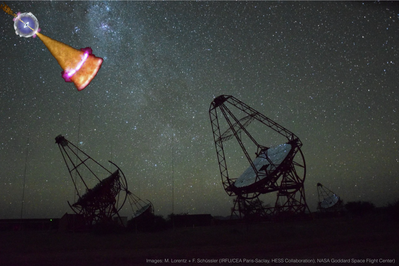 This is one of these rare moments: after decades of (quite often rather frustrating) searches we finally did it! What did we do? We detected very high-energy emission from a gamma-ray burst (GRB). These extremely energetic cosmic explosions typically lasting for only a few tens of seconds. They are the most luminous explosions in the universe. The burst is followed by a longer lasting afterglow mostly in the optical and X-ray spectral regions whose intensity decreases rapidly. The prompt high energy gamma-ray emission is mostly composed of photons several hundred-thousands to millions of times more energetic than visible light, that can only be observed by satellite-based instruments. Whilst these space-borne observatories have detected a few photons with even higher energies, the question if very-high-energy (VHE) gamma radiation (at least 100 billion times more energetic than visible light and only detectable with ground-based telescopes) is emitted, has remained unanswered until now.On 20 July 2018, the Fermi Gamma-Ray Burst Monitor and a few seconds later the Swift Burst Alert Telescope notified the world of a gamma-ray burst, GRB 180720B. Immediately after the alert, several observatories turned to look at this position in the sky. For H.E.S.S. (High Energy Stereoscopic System), this location became visible only 10 hours later. Nevertheless, the H.E.S.S. team decided to search for a very-high-energy afterglow of the burst. After having looked for a very-high-energy signature of these events for more than a decade, the efforts by the collaboration now bore fruit. A signature has now been detected with the large H.E.S.S. telescope that is especially suited for such observations. The data collected during two hours from 10 to 12 hours after the gamma-ray burst showed a new point-like gamma-ray source at the position of the burst. While the detection of GRBs at these very-high-energies had long been anticipated, the discovery many hours after the initial event, deep in the afterglow phase, came as a real surprise. The discovery of the first GRB to be detected at such very-high-photon energies is reported in a publication by the H.E.S.S. collaboration et al., in the journal 'Nature' on November 20, 2019. Who is "we"?
The results were obtained using the High Energy Stereoscopic System (H.E.S.S.) telescopes in Namibia. This system of four 13 m diameter telescopes surrounding the huge 28 m H.E.S.S. II telescope is the world's most sensitive very high-energy gamma ray detector. The H.E.S.S. telescopes image the faint, short flashes of bluish light emitted when energetic gamma rays interact with the Earth's atmosphere (so-called Cherenkov light), collecting the light with big mirrors and focusing it onto extremely fast reacting sensitive cameras. These Cherenkov images allow H.E.S.S. to reconstruct the properties of the interacting gamma-rays and ultimately detect their sources. The High Energy Stereoscopic System (H.E.S.S.) team consists of over 200 scientists from Germany, France, the United Kingdom, Namibia, South Africa, Ireland, Armenia, Poland, Australia, Austria, the Netherlands, Japan and Sweden, supported by their respective funding agencies and institutions. While I was not personally involved in the data analysis for this particular event, I am responsible for the searches for transient (i.e. rapidly fading) phenomena within the H.E.S.S. collaboration (technically speaking I am the convener of the "Transient" working group). Among the various topics covered in this group, searches for emission from GRBs have always been (and will obviously remain) the highest priority. Other searches include the quest for gamma-ray emission associated to Gravitational Waves, high-energy neutrinos, Fast Radio Bursts, Novae and Supernovae as well as flares from AGN, stars, magnetars, etc. What does this mean and what is next? The very-high-energy gamma radiation which has now been detected not only demonstrates the presence of extremely accelerated particles, but also shows that these particles still exist or are created a long time after the explosion. Most probably, the shock wave of the explosion acts here as the cosmic accelerator. Before this H.E.S.S. observation, it had been assumed that such bursts likely are observable only within the first seconds and minutes at these extreme energies. At the time of the H.E.S.S. measurements the X-ray afterglow had already decayed very considerably. Remarkably, the intensities and spectral shapes are similar in the X-ray and gamma-ray regions. There are several theoretical mechanisms for the generation of very-high-energy gamma light by particles accelerated to very high energies. The H.E.S.S results strongly constrain the possible emission mechanisms, but also present a new puzzle, as they request quite extreme parameters for the GRB as a cosmic accelerator. Together with the observations of very-high-energy gamma radiation following later GRBs with MAGIC (published in the same edition of Nature on Nov. 20, 2019) and again with H.E.S.S. (GRB190829A), this discovery provides deeper insights into the nature of gamma-ray bursts and opens the window for deeper observations and further studies. For more than a decade, Cherenkov telescopes such as H.E.S.S., MAGIC and VERITAS have searched for very-high-energy gamma radiation from GRBs and continuously improved their observation strategies. Now several GRBs have been detected at very high energies within a very short time, and we now know that these bursts are emitting at extreme energies for many hours. This opens entirely new perspectives for further observations with the current instruments and is even more promising for the successor instrument, the Cherenkov Telescope Array, which will enable us to study these stellar explosions in much more detail. A few highlights of the media coverage:
High-energy astrophysics has seen quite some amazing revolutions over the last years. To name just a few: we detected Gravitational Waves (GWs) and could link them to Gamma-Ray Bursts (GRBs), we detected high-energy neutrinos and could link (at least one of them) to a flaring blazar, we scanned the Galactic Plane discovering a wealth of new sources emitting VHE gamma-rays and we could finally observe VHE gamma-rays from a GRB. These and many more discoveries are not only great achievements of the past: more importantly they open new windows to the high-energy universe and thus promise even more exciting observations and future discoveries. To fully exploit these possibilities, we obviously need the right instruments and observatories. But fortunately the future is also bright in this respect: the VIRGO and LIGO interferometers are being improved continuously and will path the way towards 3rd generation instruments like the Einstein Telescope and LISA. The IceCube neutrino telescope is continuing operations while IceCube-Gen2, GVD and KM3NeT are being prepared and built. The SVOM and later the ATHENA (and hopefully the THESEUS) X-ray satellites are being constructed, the pathfinders of the Square Kilometer Array (SKA) radio observatory have started operations and the full SKA is approaching fast. In the VHE gamma-ray domain, the current Imaging Air Cherenkov Telescopes (H.E.S.S., MAGIC and VERITAS) are shifting their focus more and more to transient and multi-messenger studies and operations are assured for the next few years when the Cherenkov Telescope Array (CTA), which is currently entering its construction phase, will take over. The HAWC observatory is producing novel and surprising results at an amazing rate, while the next-generation observatory LHAASO is being constructed. While this global landscape of observatories is certainly extremely broad, there is at least one crucial piece missing: a large field-of-view VHE gamma-ray observatory in the Southern hemisphere. While many arguments lead to this conclusion, the main ones are:
Following the success of the HAWC air shower array, the idea to build a next-generation observatory in the Southern hemisphere has been floating around the community for several years. Different groups started to develop various design ideas and started building prototypes to valide them. With the aim of structuring these efforts, the Southern Gamma-ray Survey Observatory (SGSO) Alliance was founded about a year ago. Its aim is to form a community of scientists to work together towards the definition and implementation of a next-generation, large field-of-view high-energy gamma-ray observatory in the Southern hemisphere. The Alliance (and yes, the reference to the Star Wars universe is on purpose ;-)) already attracted more than 110 friends and colleagues from 18 countries around the globe (cf. right map above). Over the last year I helped coordinate an effort to define the science case of such an observatory. Put in simple terms, the aim of this enterprise was to agree on and outline a baseline of what science we want to do with such an instrument. Many people contributed to the discussions and the writing of what is now called the "Science Case for a Wide Field-of-View Very-High-Energy Gamma-Ray Observatory in the Southern Hemisphere". The paper is available on the arXiv today... A few illustrative performance figures of SGSO used for the study of the science case. In summary, we believe that the Southern Gamma-ray Survey Observatory, a next-generation high-energy gamma-ray observatory in the Southern hemisphere, will provide unprecedented observations of high-energy phenomena in the universe. These can be roughly divided into four main categories:
The ambitious goals of SGSO will be made possible by important developments and design studies. Various detector and array designs are currently studied with simulations and validated with prototypes. In parallel, several candidates for an optimal site for the future observatory have been identified and are being assessed. More details in our extensive paper: https://arxiv.org/abs/1902.08429arxiv.org/abs/1902.08429 Exciting times ahead... Lets see where this adventures takes us... In the last entry to this blog I talked about the birth of gravitational wave multi-messenger astrophysics and how the first joint detection of gravitational waves and electromagnetic waves in August 2017 opened a totally new window to the universe. But the summer of 2017 produced even more surprises! On September 19, 2017: at 20:54:30.43 Coordinated Universal Time (UTC), a high-energy neutrino of about 290TeV (IceCube-170922A) was detected in an automated analysis that is part of IceCube’s real-time alert system. An alert was distributed to observers 43 seconds later. The direction of the neutrino (reconstructed to an area of about 1 square degree and consistent with the location of a known gamma-ray blazar TXS 0506+056) became visible at the location of the H.E.S.S. observatory in Namibia around 4 hours later. The event perfectly fulfilled the criteria I had outlined in the follow-up program of high-energy neutrinos (cf. Multimessenger searches). We could thus start H.E.S.S. observations and acquired an initial dataset of 1.3h during that night. After a first look at this data and without detecting significant gamma-ray emission I announced this in ATEL #10787. Additional observations were obtained on subsequent nights but still no gamma-ray emission could be detected from the region. Upper limits at 7.5*10^-12 erg / cm^2 /s (95% C.L.) on the gamma-ray flux level were subsequently derived. Too bad for us, but the story fortunately does not stop there... The IceCube observatory in the deep ice below the South Pole. The event IC170922 is illustrated by the colorful markers indicating the arrival time of the signals. Credit: IceCube/NSF Observations of lower energy gamma-rays obtained with the LAT instrument onboard the Fermi satellite showed the blazar TXS 0506+056 to be in a flaring state since April 2017. Strong flux variations by almost an order of magnitude with respect to the long-term average had been observed over several weeks. This first observation of a neutrino in spatial coincidence with the gamma-ray emitting blazar during an active phase suggests sparked the interest of the wider astronomical community and triggered an extensive multi-wavelength campaign with observations ranging from radio frequencies to high-energy gamma-rays. During this campaign high-energy gamma rays with energies up to 400 GeV were detected by the MAGIC instrument located at the Roque de los Muchachos Observatory on the Canary Island of La Palma. The emission in X-rays showed clear evidence for spectral variability, the flux in the optical V band was the highest ever observed in recent years and polarization has been detected at the level of 7% in the R band. A summary of these observations can be found in a joint publication in Science 361. Finally, the redshift of TXS 0506+056 was recently determined to be z = 0.3365 +- 0.0010 using the largest single mirror optical telescope, the Gran Telescopio Canarias (S. Paiano et al. ApJL 854), providing crucial input into our understanding on the level of attenuation of the TeV flux following its propagation through extragalactic space. Another global multi-messenger effort allowed to detect the correlation between a high-energy neutrino (IC170922) and a flaring blazar (TXS 0506+056). Credit: N.Fuller/NSF/IceCube Is this the first source of high-energy neutrinos? If true, this would mean that blazars may indeed be a source of high-energy cosmic rays and thus provide a crucial step towards resolving a century old puzzle. Whoa... But I believe it is important to keep a cool head, and note that there remains a roughly 0.1% probability that the coincidence of the neutrino event with the flare of TXS 0506+056 is purely a random chance coincidence. Think of it like rolling a dice 4 times continuously getting the exact same number: not totally out of the ordinary, right? There is also an ongoing discussion about an additional 44% probability that the neutrino was induced by a CR hitting the Earths atmosphere and would thus not point back to any astrophysical origin in the first place. One thing is clear: this correlation is extremely interesting and promises a significant breakthrough. Confirmation can only come with further observations. Thanks to our preparations, H.E.S.S. and the upcoming Cherenkov Telescope Array are prime instruments to do just this... Looking forward to the next neutrino alert. It may just be around the corner... AS-SN optical V-band widefield image of the sky centered on the known position (+) of the TXS 0506+056 blazar. Two known objects from catalogues of gamma-ray sources generated Fermi Large Area Telescope are shown as blue circles, one being TXS 0506+056, with diameter representing the 95% position uncertainty. Also shown are the 50% and 90% containment areas (solid-grey and dashed-red contours, respectively) for the best-fit directional reconstruction of a high-energy neutrino detected on 22 September 2017 that indicate positional coincidence with the blazar TXS 0506+056. Subsequent very high-energy gamma-ray observations from the MAGIC imaging air Cherenkov telescopes also detected this source, with 68% positional uncertainties of those observations shown as the yellow circle. Inset is a zoomed view of the region of interest surrounding TXS 0506+056. From IceCube Collaboration et al., Multimessenger observations of a flaring blazar coincident with high-energy neutrino IceCube-170922A. Science 361 Press coverageA large amount of very interesting articles describing our findings have been published. Here I only a very personal (and thus biased) selection:
On August 17, 2017, the gravitational wave interferometers Advanced Ligo and Advanced Virgo recorded a signal from the merger of a binary neutron star system, a type of signal that had never been seen before. Complementing this exciting discovery, a large variety of electromagnetic observations were able to record signals from the same event. They range from the detection of a gamma-ray burst about 2 seconds after the gravitational wave event, over near-infrared, optical and UV emission from decay of radioactive nuclei created in the resulting kilonova to X-ray and radio emissions detected several days and weeks after the event. This first and extremely successful observation campaign is marking the beginning of multi-messenger astrophysics. Observatories that participated in the observations following the detection of gravitational waves from the merger of a binary neutron star system. Can you spot H.E.S.S.? Source: LIGO/Virgo The gravitational wave event was localized within a region of about 30 square degrees, well beyond the H.E.S.S. field of view and requiring multiple pointings to cover the area. We (Monica, my PhD student and myself) rushed to apply the target selection algorithms that we had prepared and identified regions of high probability to find a counterpart of the gravitational wave event. We were able to request H.E.S.S. observations in record time (only 5minutes after the publication of the localisation of the gravitational wave event by Virgo/Ligo!!). Our observations thus started only 5.3h after the gravitational wave event GW170817. The covered regions already contained the counterpart SSS17a that has later been identified in the optical domain, several hours after our observations (see Figure below). As a result, H.E.S.S. was the first ground-based pointing instrument to obtain data on this object. A subsequent monitoring campaign with the H.E.S.S. telescopes extended over several days, covering timescales from 0.22 to 5.2 days and energy ranges between 270 GeV to 8.55 TeV. No significant gamma-ray emission has been found within this time interval. The derived upper limits on the very-high-energy gamma-ray flux for the first time constrain non-thermal, high-energy emission following the merger of a confirmed binary neutron star system, and further observations of this source will allow to check whether TeV energies are reached on a larger time scale. Left: Pointing directions of the first night of H.E.S.S. follow-up observations starting August 17, 2017, at 17:59 UTC. The circles illustrate a FoV with radius of 1.5 deg and the shown times are the starting times of each observation with respect to GW170817. The localisation map of GW170817 is shown as colored background, the red lines denote the uncertainty contours of GRB170817A. Right: Map of significances of the gamma-ray emission in the region around SSS17a obtained during the first H.E.S.S. observation of GW170817. The white circle has a diameter of 0.1deg, corresponding to the H.E.S.S. point spread function and also used for the oversampling of the map. Figure from Abdalla et al. (H.E.S.S. Collaboration), submitted to ApJL Following the observations, we rapidly transferred the data from Namibia to Europe for analysis. After some troubles due to hard-drives that were crushed during the shipping, we managed to carefully analyse the dataset in record time. In parallel we prepared a publication that (again in record time) has been submitted to ApJLetters right in time for the announcement of the gravitational wave event and the extensive follow-up campaign. The paper can be found on the arXiv tonight. For the very impatient ones it is already available on the H.E.S.S. website (incl. a short news article I wrote).
We also were able to contribute to a paper that has been prepared jointly by all observatories and collaborations contributing to these unprecedented observations. This paper can be found here: "Multi-messenger observations of a Binary Neutron Star Merger". It is definitely a milestone in astrophysics and will be regarded as the birth of multi-messenger astrophysics... After spending several years on the preparation of the H.E.S.S. multi-messenger program (see Multimessenger searches for more details), this event together with the multi-messenger and multi-wavelength observation campaign and the successful H.E.S.S. participation is extremely exiting and rewarding for my colleagues, friends and me personally... The dreams we were chasing for the last years (and that have been treated as such by many within the more main-stream astrophysics community) have suddenly materialized and become a reality. Exciting times ahead: the Virgo and Ligo interferometers are currently not taking data but are undergoing upgrades and further improvements. They should be restarting physics observations in summer 2018 with the prospect to detect many more events of this kind. After the frenzy of the weeks since the detection of GW170817, this break is obviously highly appreciated ;-) We'll also use it to further improve the response of high-energy gamma-ray instruments like H.E.S.S., CTA and HAWC to these events. You can even become part of this endeavor: see Team / open positions for details and don't hesitate to contact me (Contact). Exciting times ahead... The Advanced Ligo and Advanced Virgo observatories announced the first detection of a gravitational waves that has been recorded by all three interferometers simultaneously. The paper describing the event has been published by PRL. The merger event itself, a binary black hole composed of a black hole with ~30 solar masses and another one with ~25 solar masses at a redshift of about 0.1, are matching nicely the previous detections: The crucial part of this detection is that is has been seen by all three instruments. It is thus confirming the performance of the Virgo instrument that had been switched on only two weeks before this observation. It also illustrates the power of combining the data from the different instruments to significantly improve the localisation uncertainty of the origin of the gravitational wave. Using only data from the two Ligo detectors, the 90% uncertainty maps spans 1160deg^2 across the sky, impossible to scan with typical telescope searching for a counterpart/afterglow/etc. Adding the data from Virgo this region shrinks to less then 100deg^2!! This improvement is clearly visible in the skymaps below.
Regions of this size become accessible for pointing telescopes. As example: we managed to cover almost the complete region with H.E.S.S. observations searching for high-energy gamma rays emitted by the black hole merger. As everybody else we didn't see any... See GCN #21673 for a summary of our observations. The importance of this event is thus primarily its illustration of the achieved precision of the GW localisation allowing for follow-up observations across the electromagnetic spectrum. Astronomy with gravitational waves is thus becoming a reality... Stay tuned for more... Over the last week the 35th International Cosmic Ray Conference has been held in Busan (South Korea). It is the largest and best-known meeting on astroparticle physics and is being held every two years. This year about 850 participants from more than 50 countries made the trip to Busan, making it a perfect place to meet many colleagues and friends and learn about the most recent results from all major astroparticle observatories. This year I was invited to give a plenary talk summarizing searches for transient phenomena with high-energy gamma-ray observatories. My talk is here... A personal selection of interesting results: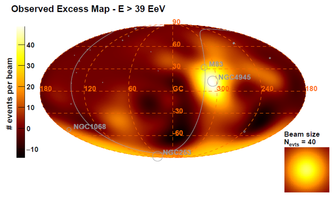 Among the most striking new results is an indication for a small scale anisotropy in the arrival directions of ultra-high energy cosmic rays (UHECR) detected by the Pierre Auger Observatory. In addition to the confirmation of the previously announced dipole structure, they found a correlation with nearby starburst galaxies (i.e. galaxies with a high level of star formation) at angular scales around 13deg. The significance reached about 4sigma (i.e. the probability for a background fluctuation is less then one in 25.000). Details are given here. Somehow everybody fears that this hint might have a similar fate as the previous claim (see Cosmic Rays for more on this). Hopefully these doubts will be proven unsubstantiated by future observations and we will look back at Busan as the place where UHECR astronomy started. ;-) 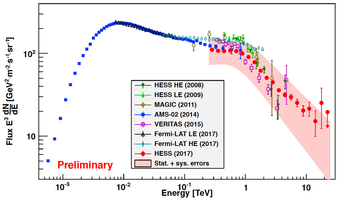 The H.E.S.S. collaboration reported an updated measurement of the energy spectrum of cosmic electrons with unprecedented precision. It seems like the shape of this spectrum and especially the pronounced and very sharp break around 950GeV will give theorists some sleepless nights. It might be related to the set in of cooling effects in the interstellar magnetic fields, but one would naturally expect a much more smoother turn-over. See here for details. H.E.S.S. also reported on improvements on the event reconstruction and analysis techniques. The most important new technique is probably the introduction of time dependent Monte Carlo simulations which reproduce the actual data taking conditions much more precisely and thus lower the systematic uncertainties. Coincidentally the introduced scheme is very similar to the one I introduced for the Pierre Auger Collaboration during my PhD thesis and which is still used to measure the energy spectrum of cosmic rays. The first impressive application of the new MC technique is the measurement of the Crab nebula at TeV energies, roughly matching the one seen in X-rays. See here for the talk presenting the analysis. 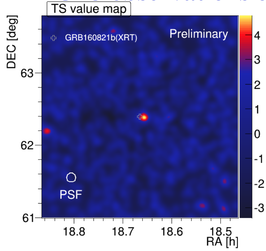 The MAGIC collaboration showed a hint for the long-awaited detection of a gamma-ray burst (GRB) with their Imaging Air Cherenkov Telescope system. The burst itself (GRB 160821B) is one of the brightest short GRBs seen by the GBM instrument onboard the Fermi satellite and MAGIC could react to the incoming alert message within only 24 seconds. Unfortunately the weather conditions at that moment were pretty unfavorable with clouds, high moonlight illuminations and high zenith angles leading to a rather high energy threshold around 500GeV. The observed hotspot has a statistical significance of (only) about 3sigma. The talk discussing the observations is here. |
AuthorMyself ;-) Archives
January 2024
Categories
All
|
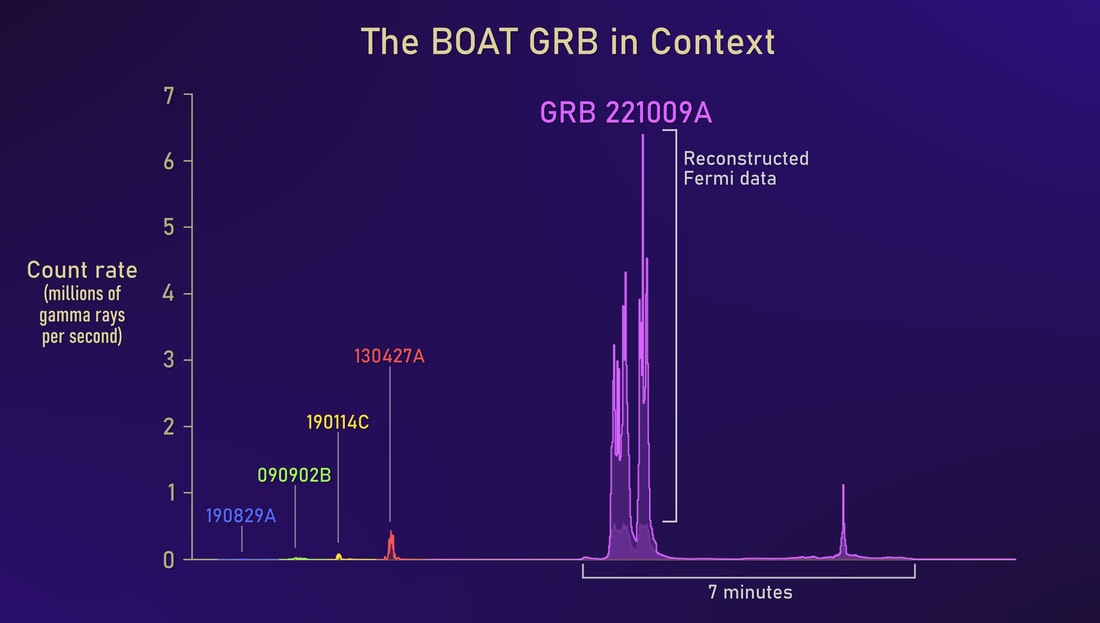
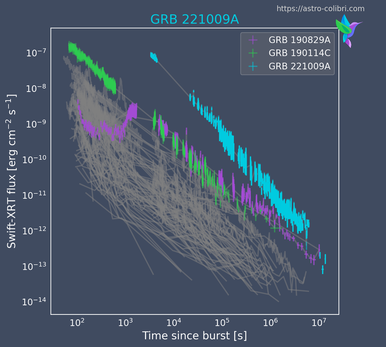
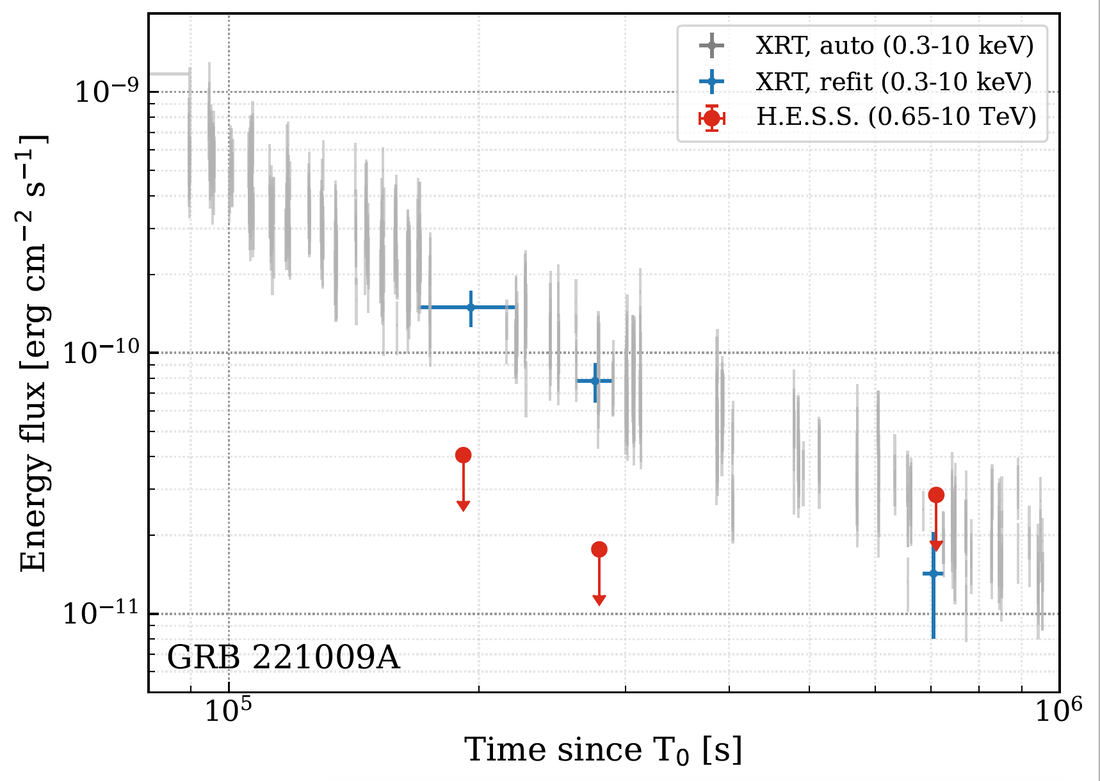
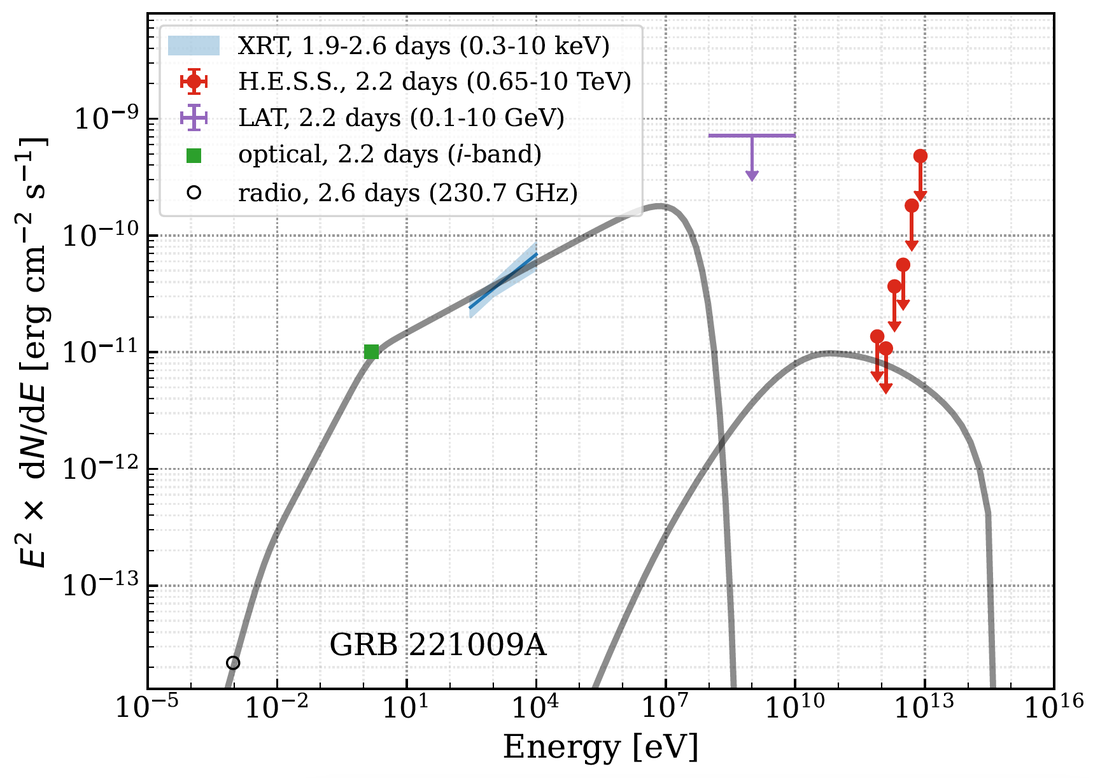
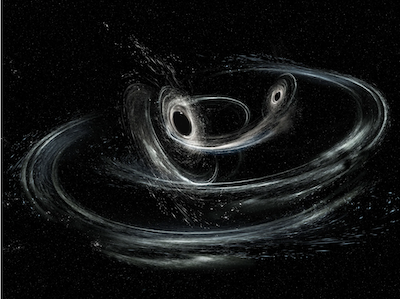
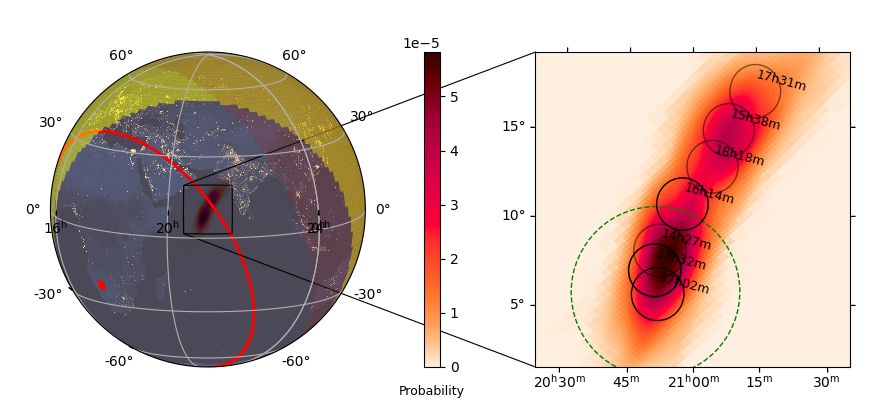
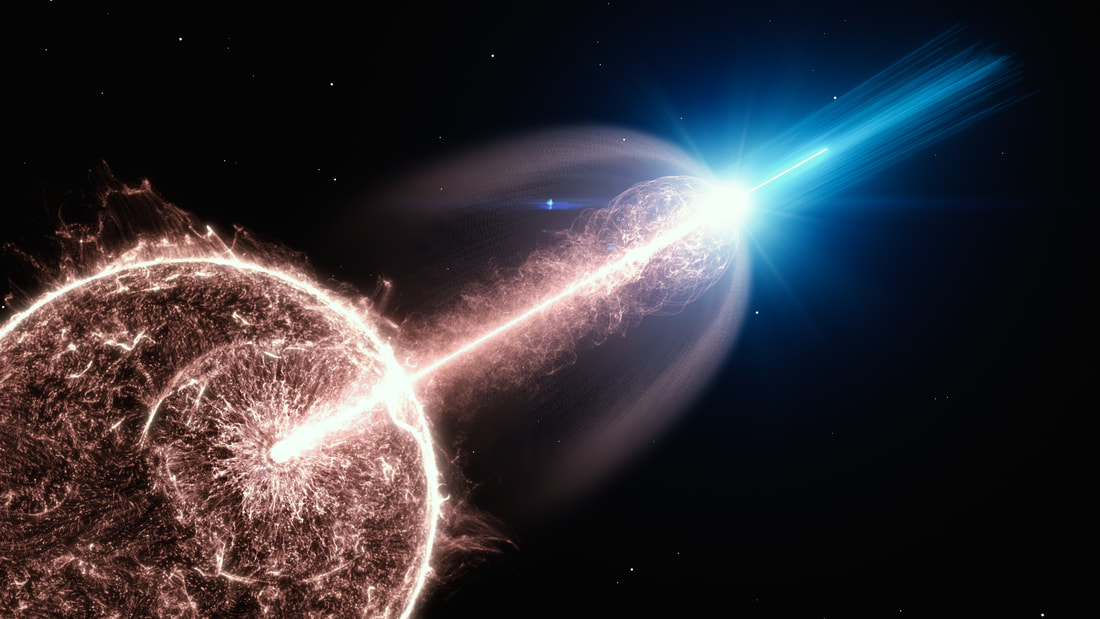
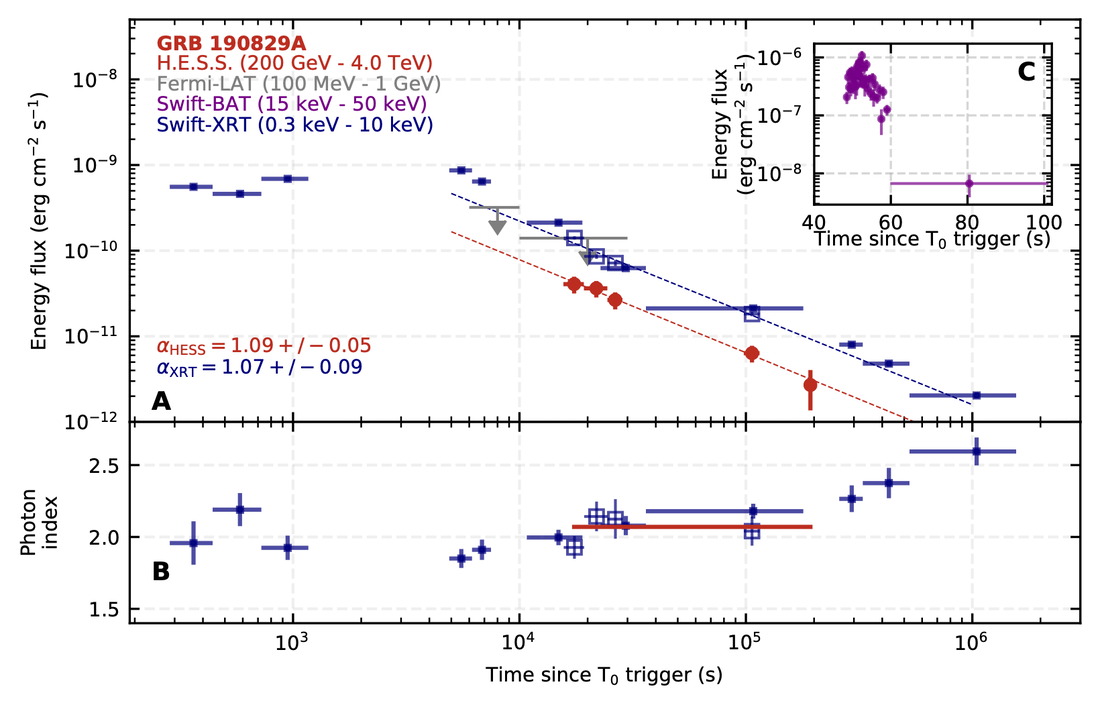
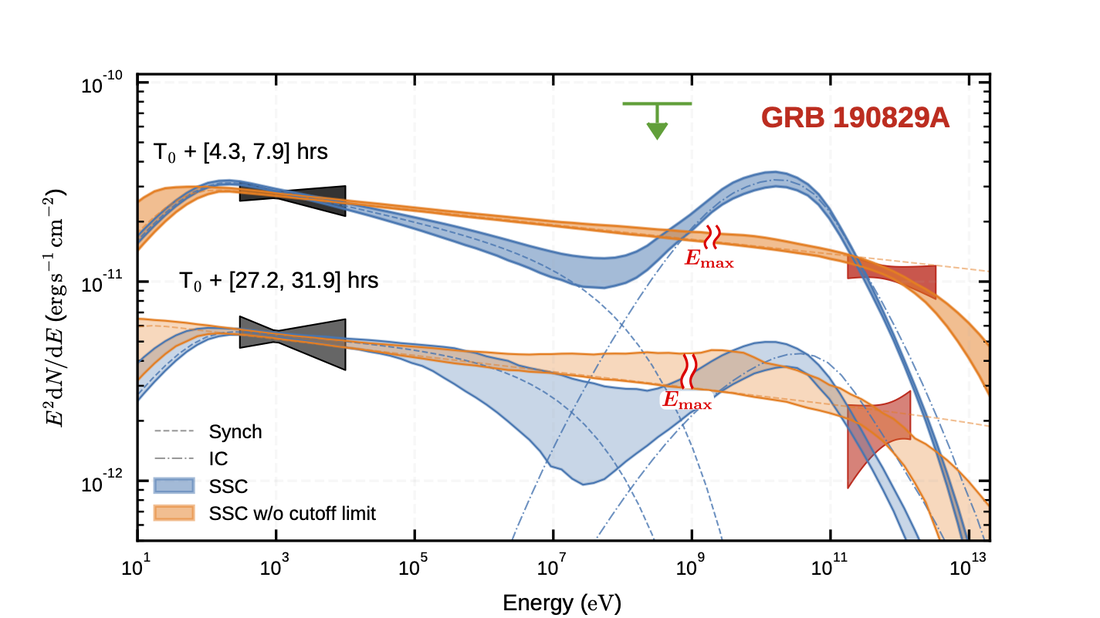
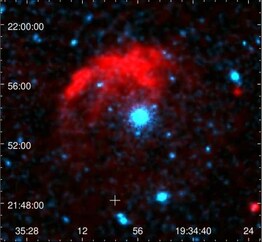
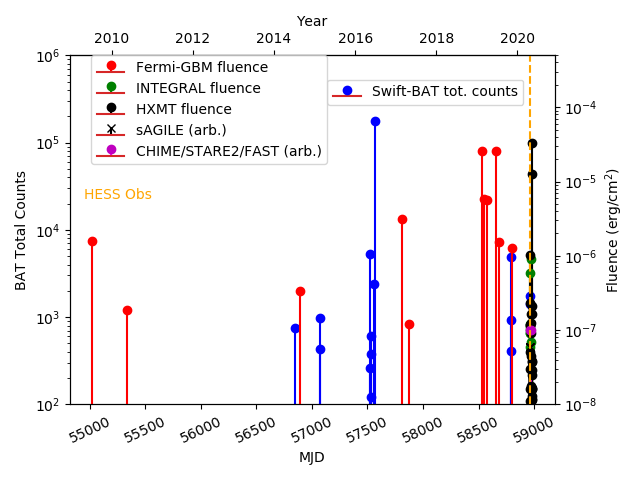
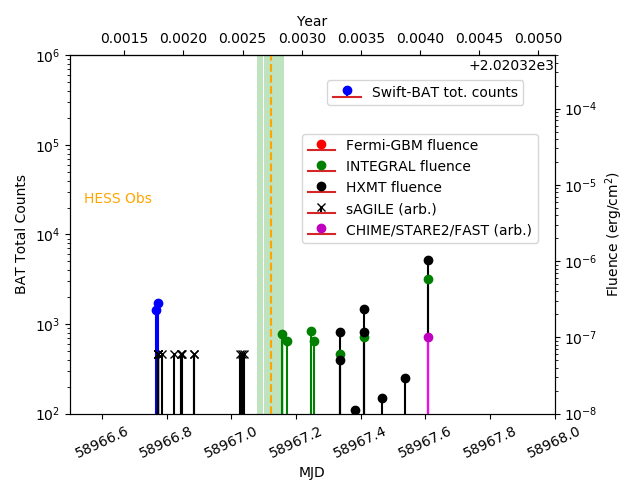
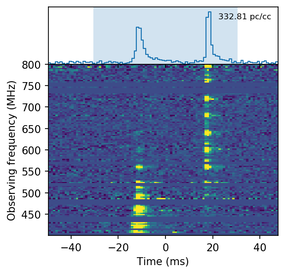
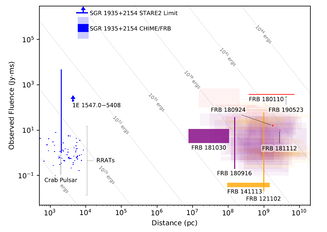
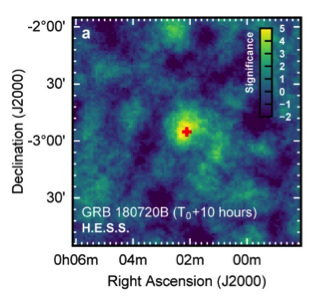
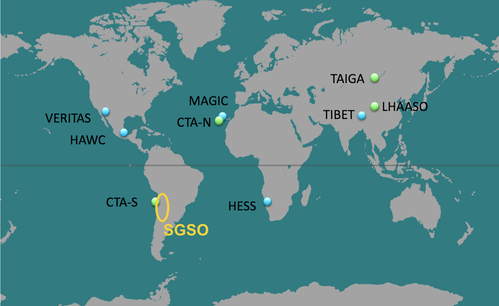
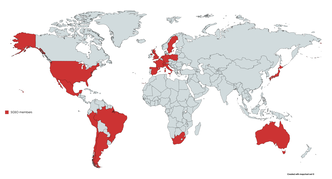
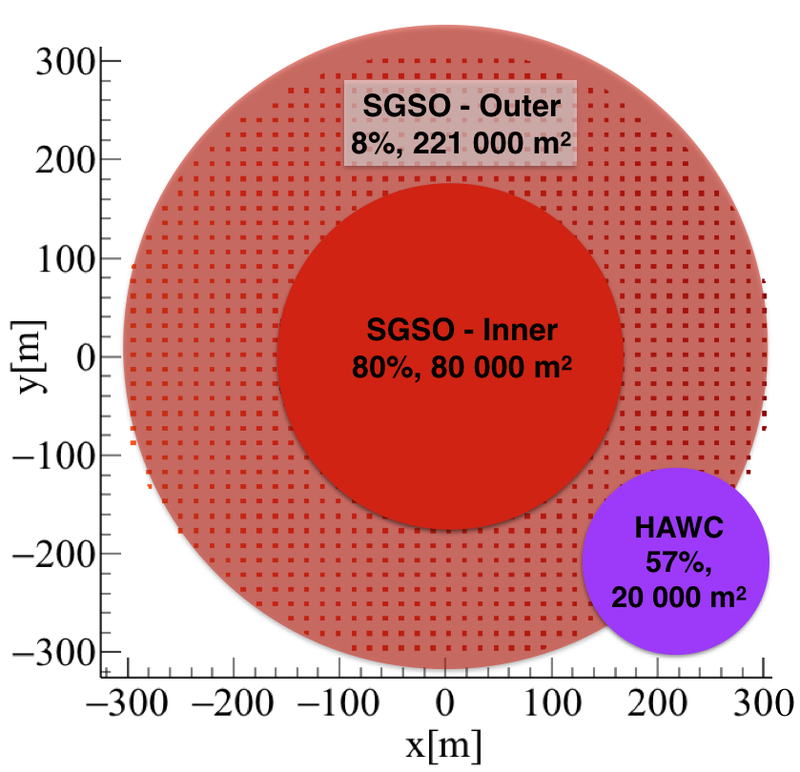
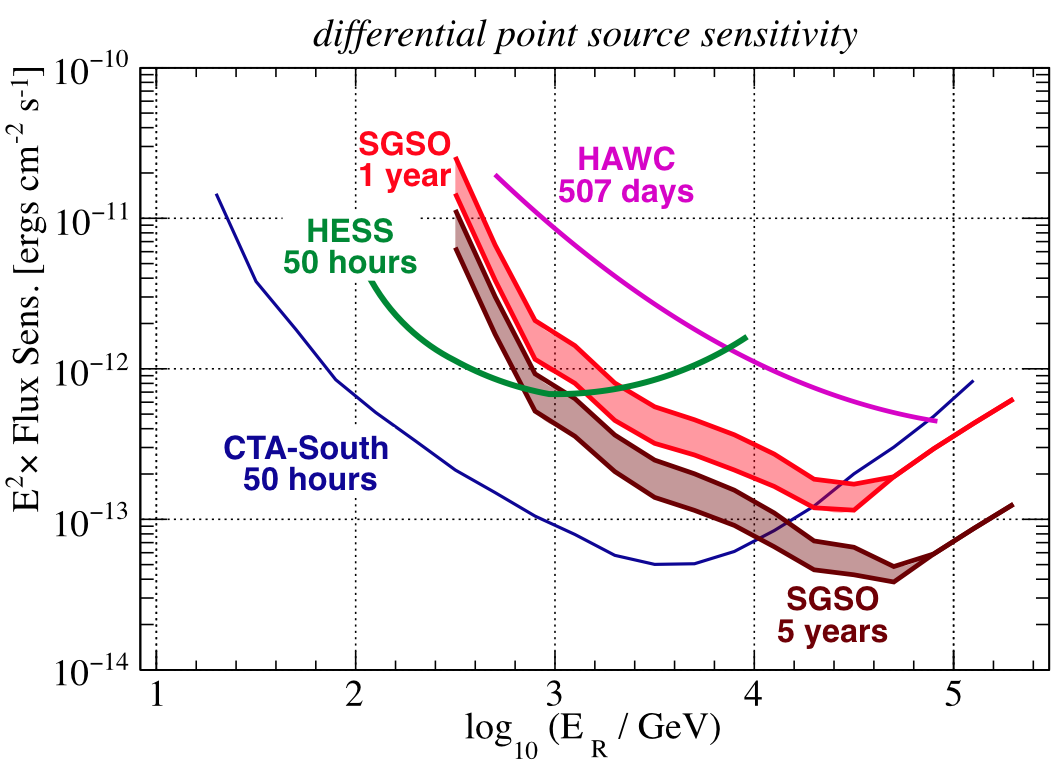
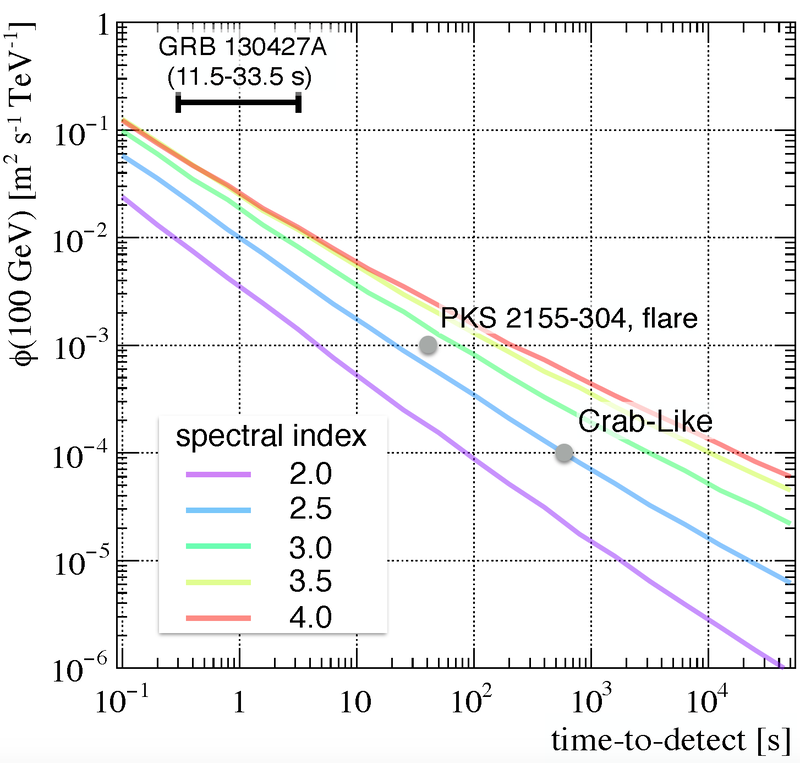
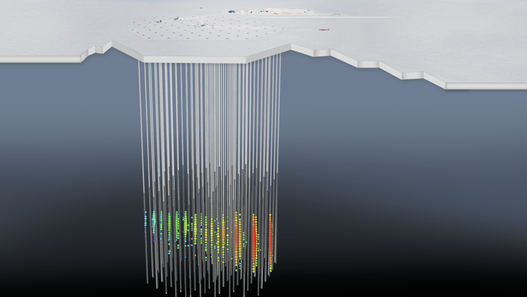
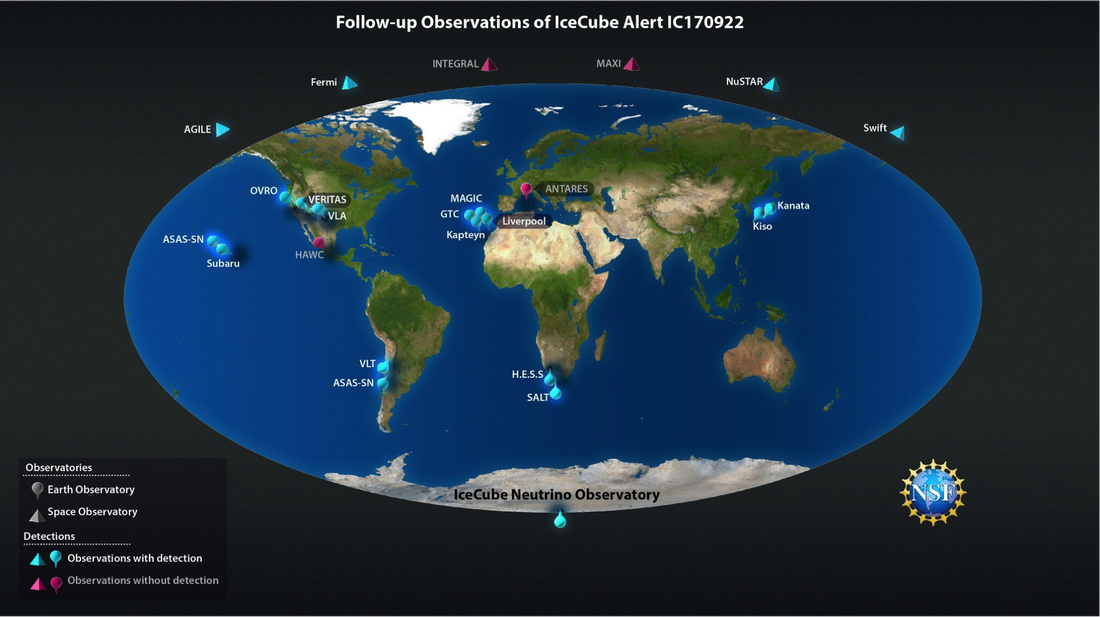
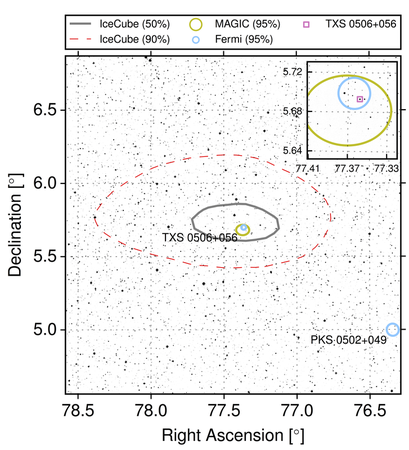
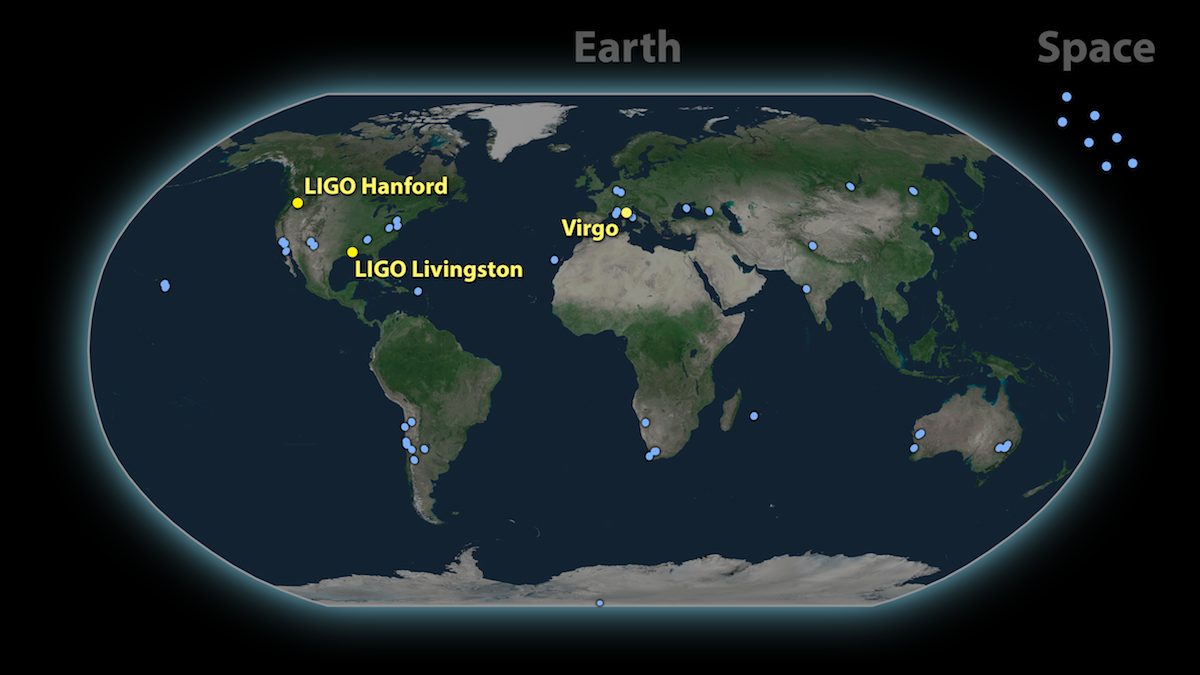
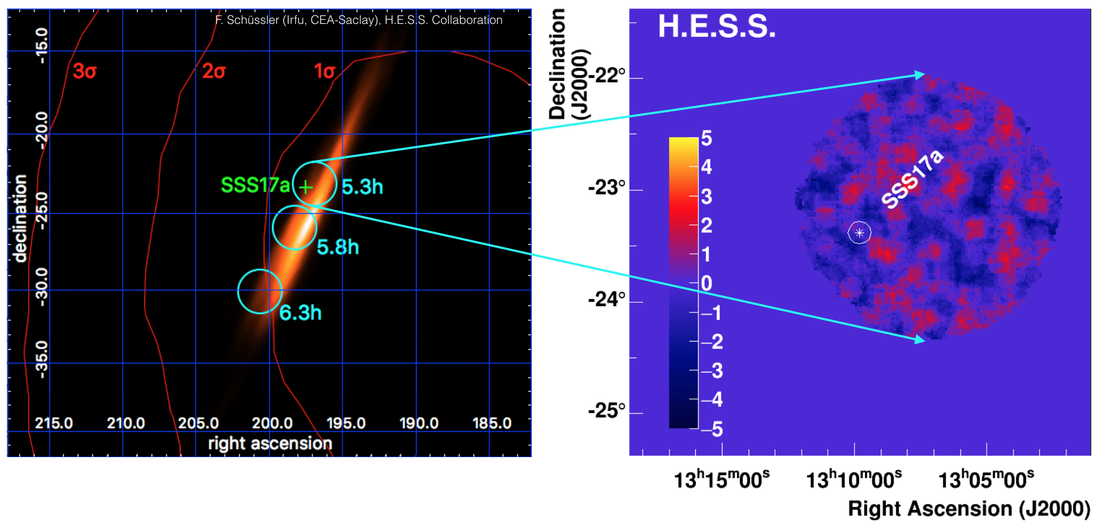
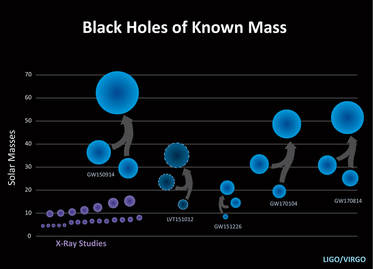
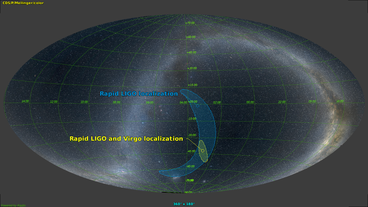
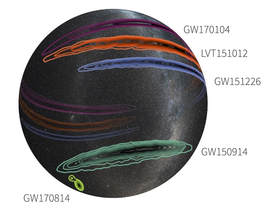

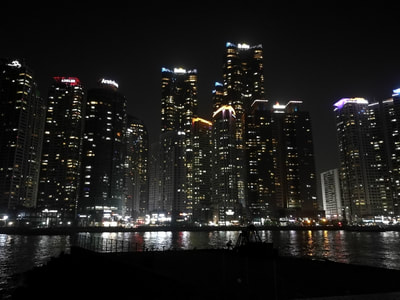

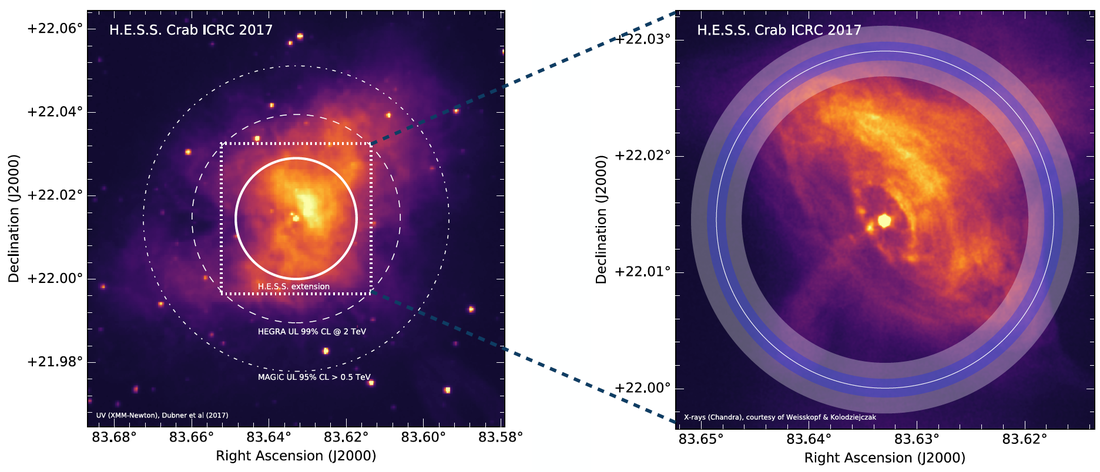
 RSS Feed
RSS Feed